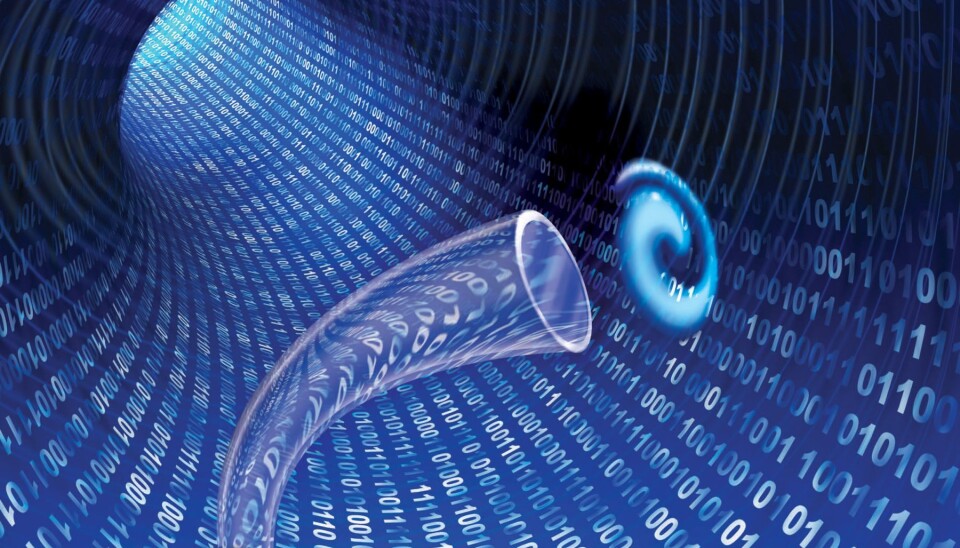
Quicker internet comes with a twist
Scientists have come up with a new way of boosting internet bandwidth. They aim to twist the light in the net’s optic cables.
A lot has happened since the days when we were surfing the web using a 56kbps modem connection.
Today, a 10-megabit internet connection is considered standard, and many even have speeds of up to 100 megabits. That’s a speed increase of between 200 and 2,000 compared to only ten years ago.
And still this isn’t enough to satisfy tomorrow’s internet needs where the numerous opportunities for streaming, cloud computing, etc. will require even faster internet connections.
Luckily, this isn’t impossible. The light in the optic cables ‘just’ needs to be sent off with a twist – a so-called Orbital Angular Momentum (OAM), say the researchers behind a new international study, published in the journal Science.
Just like in a guitar, the information is mixed up inside the cables and it becomes difficult to differentiate between all the various bits. This could easily end up requiring a very large and expensive computer.
”This is an entirely new way of thinking within data transfer, which may pave the way for faster cables in the future,” says Poul Kristensen, a Danish fibre optics researcher, who was one of the researchers in the study.
Similar to the sound from a guitar
In the study, the researchers demonstrate different ways of sending light through the optic cables, so that the light photons zigzag in various ways through the cable, each with their own bits of data.
This can be compared to the sound from a guitar:
When you pluck a string, you hear not only the keynote but also overtones. So the guitar sends out several sounds, each with their own wavelength, or information.
This is similar to sending off the photons like bullets from a rifle, where the bullets rotate quickly. In the same way we’re aiming to get the various light beams to spin, so that the data within them doesn’t get mixed up with data from other light beams.
The same can be done with the light in optic cables. Here, light can also be sent off in various ways with different information, which will increase the total amount of data per time unit.
But this process isn’t entirely without its problems:
“The great challenge lies in separating the bits of information from one another at the end of the optic cable,” says Kristensen.
“Just like in a guitar, the information is mixed up inside the cables and it becomes difficult to differentiate between all the various bits. This could easily end up requiring a very large and expensive computer.”
Twisted beams of light do not communicate
The solution, according to the researchers, lies in sending off the light with the aforementioned OAP.
By twisting the light, the data in the various light beams becomes less mixed up, and that minimises the need for a massive computer to separate all the information at the end of the cable.
”This is similar to sending off the photons like bullets from a rifle, where the bullets rotate quickly. In the same way we’re aiming to get the various light beams to spin, so that the data within them doesn’t get mixed up with data from other light beams,” says Kristensen.
The researchers have already proved their theory by sending 1.6 terabits per second through an optic cable across more than one kilometre. 1.6 terabits correspond to 1,600,000,000 kilobits – of which we only had 56 when we were surfing the web ten years ago with our modems.
-------------------------
Read the Danish version of this article at videnskab.dk





